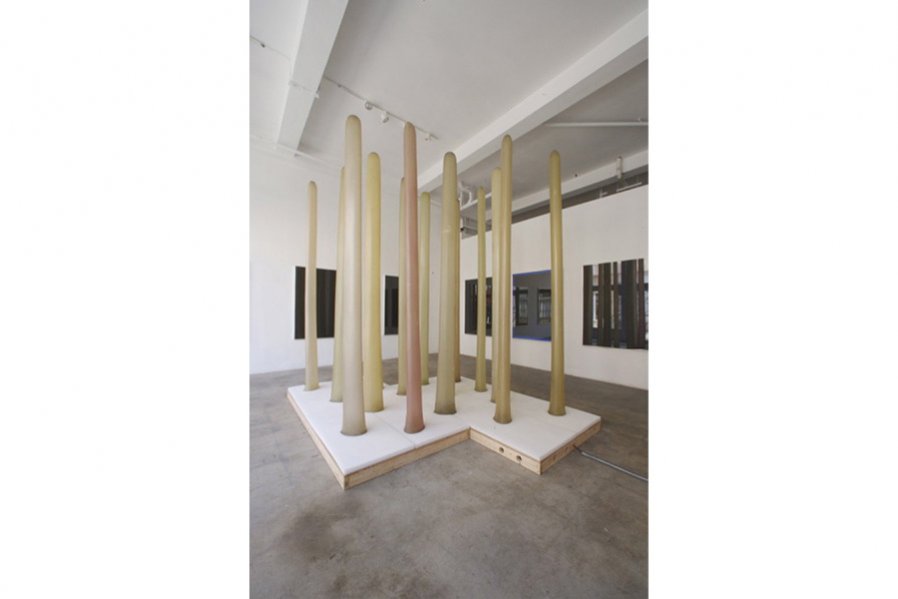
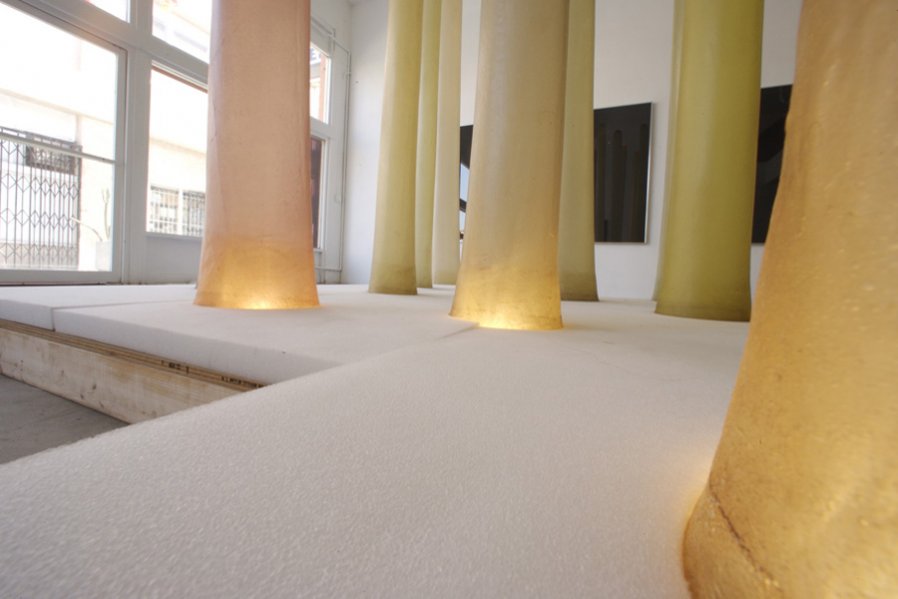
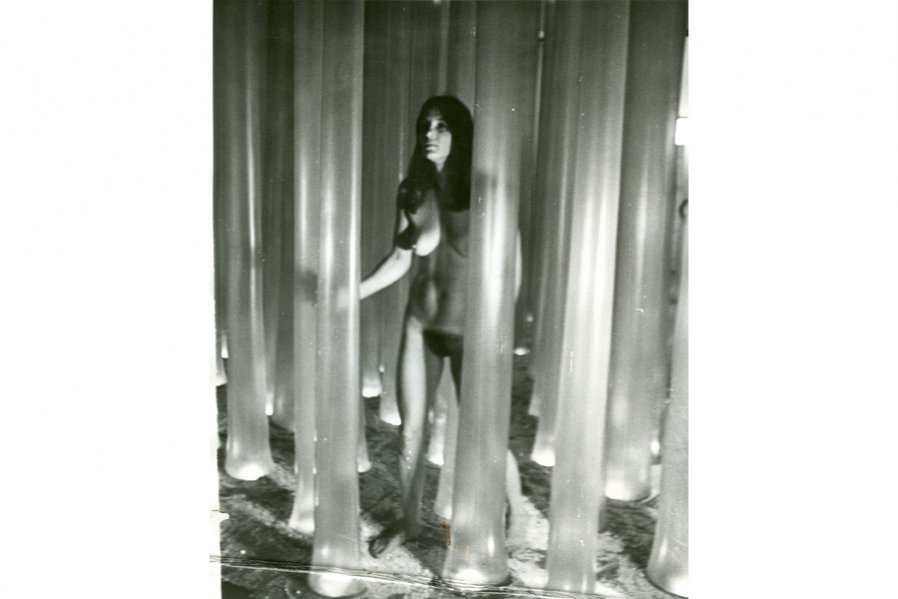
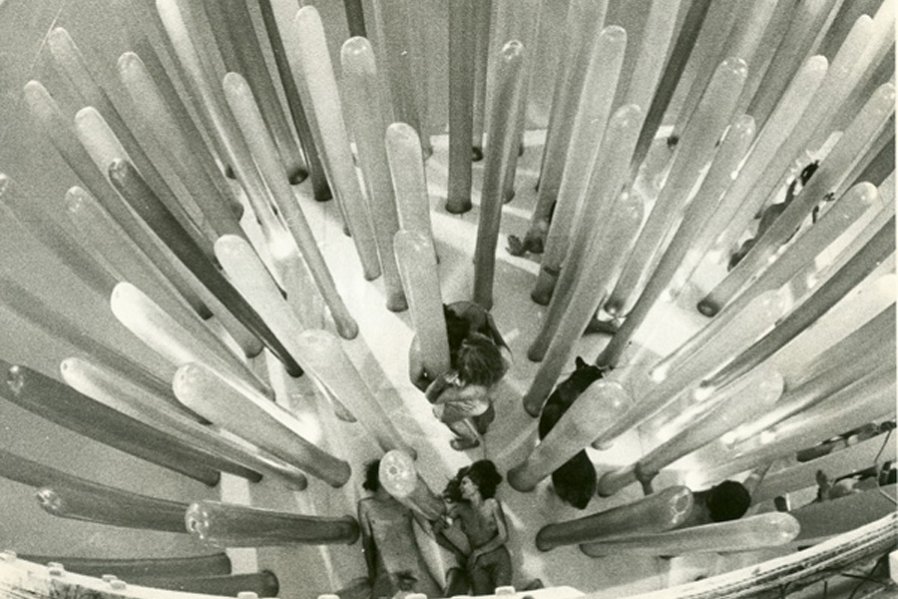
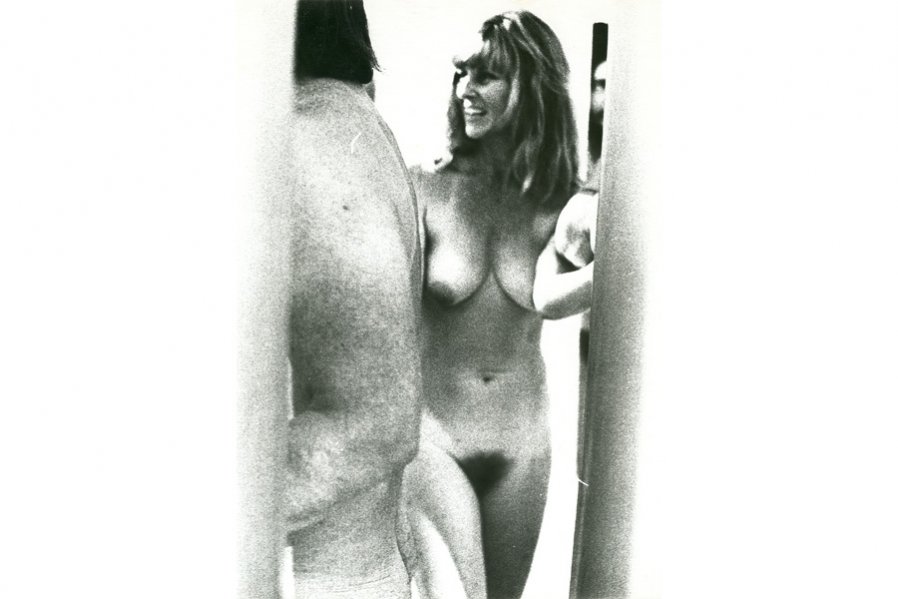
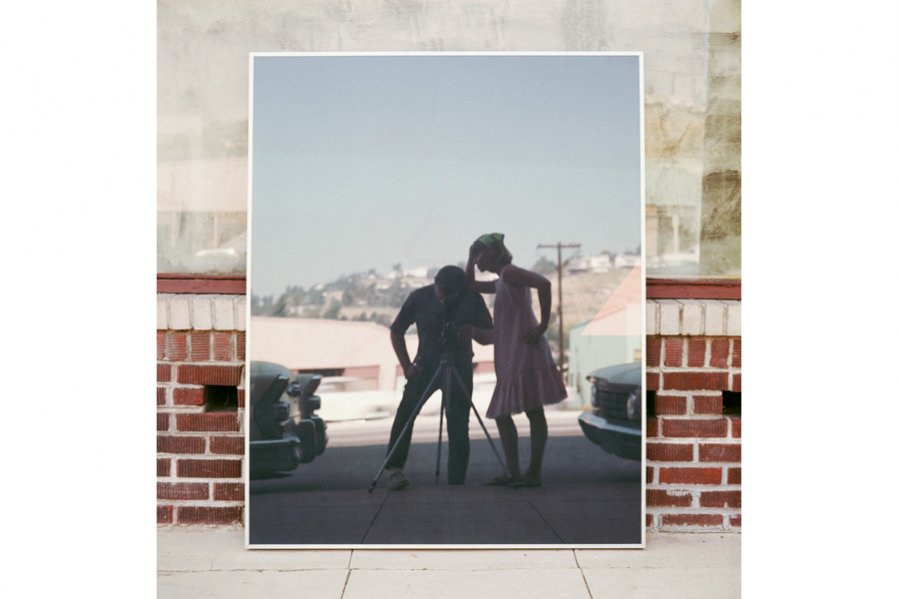
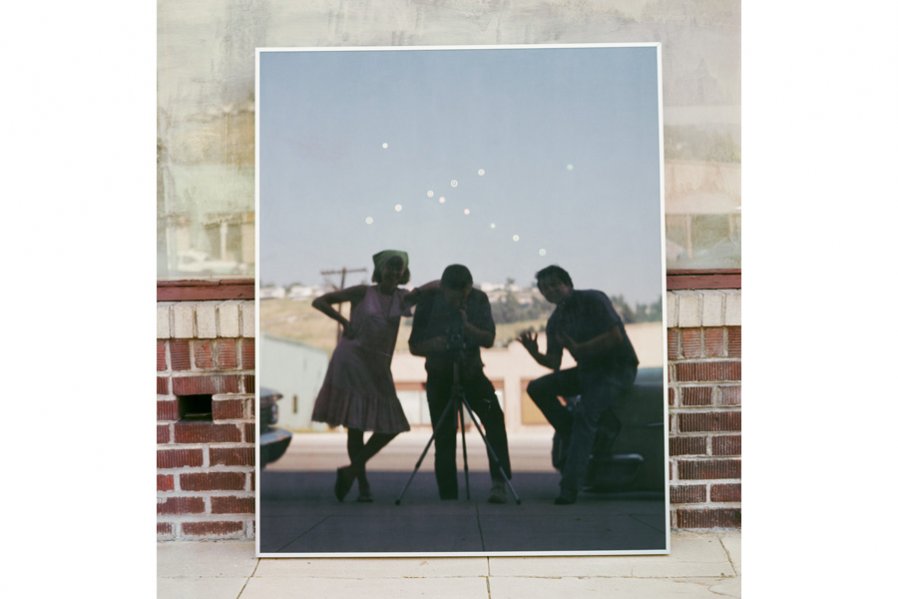
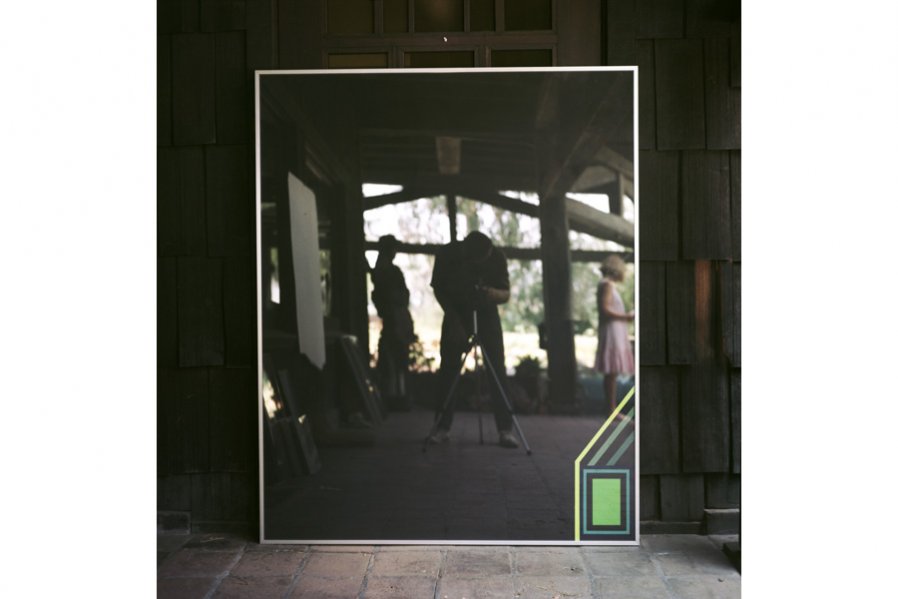
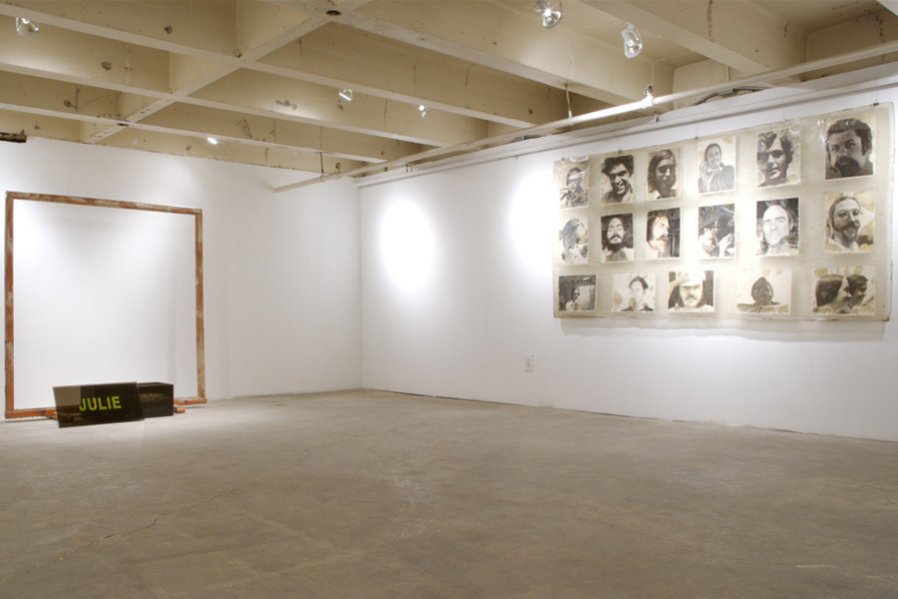
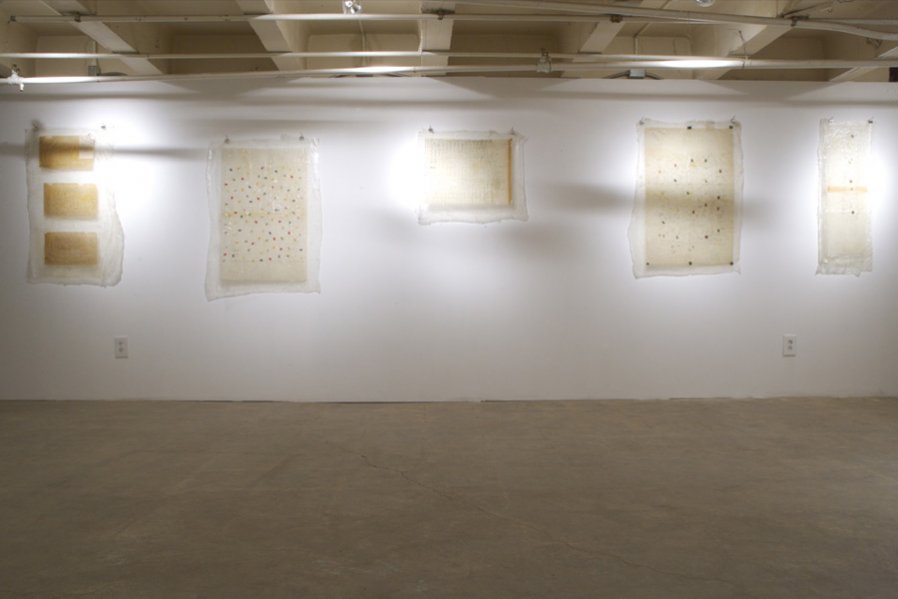
- Opening Reception: November 17th 2007, 6-8 pm
The Box is pleased to announce an extraordinary exhibition of two monumental artworks by Barbara T. Smith done in the mid 1960s and early 1970s. Smith, an artist primarily known for her performative actions, will exhibit two major pieces that are more concrete in nature and more traditional in form. One of these pieces is a series of paintings that she began in 1965. This series of paintings, entitled: The Black Glass Paintings were meant to create a reflection of the viewers back upon themselves. The second artwork exhibited will be the remnants of a conceptually related, experiential sculpture entitled Field Piece, 1968/71.
The Black Glass Paintings, 1965, are meant to create a reflection of the viewers back upon themselves. The paintings are 5 feet tall by 4 feet wide painted primarily black (although the black was usually mixed with other colors such as cobalt blue to make the black more rich) with minimalist shapes on each one; for example one has a red triangle on the vertical edge another has one white dot floating in space. Each painting is framed with a thin aluminum frame and covered by a thick piece of glass. The glass in combination with the primarily black surface, creates a vivid reflection of whoever stands in front of it. The paintings make the viewer self-reflect and force them into their own minds, enabling them to explore their own confrontation with the art.
The second work that will be exhibited is the remnants of a piece that is conceptually related to The Black Glass Paintings entitled Field Piece, 1968/71. Field Piece in its full glory was a monumental sculpture that was Smith’s envisionment of a field of grass, symbolizing freedom. This sculpture was originally composed of 180 9-½ foot tall hollow blades, made of translucent resin that would light up as the viewer passed through with a harmonic drone being emitted simultaneously. This installation sculpture could and can be directly accessed by the viewer, the complete opposite of The Black Glass Paintings in which the viewer is unable to access the pieces at all. These two artworks while conceptually opposed to one another, are connected for their very opposition. The viewer, unable to affect the paintings is instead pushed back upon themselves, while the Field Piece, is instantaneously affected by the viewer with them triggering light and sound with their very presence. How this piece might be reassembled for this exhibition has yet to be decided, but what remains are 16 of 180 original blades, that whether installed in their original glory or not, are remnants of what was a monumental sculpture in size, concept and experience and was obviously predictive of the performance work that Smith began to create at the same time.
These pieces that were made during a very complex time in Smith’s life, are evidence of her determination to achieve respect and competence as an artist and as a woman. She was pushing through an internal void to find vast space. This exhibition is an attempt to honor her early work, displaying the brilliance and beauty of this body of work in a way that has never been done before.
The exhibition is one that is long overdue, considering that none of pieces have been shown since 1972, and we at The Box gallery are pleased to exhibit these pieces, exposing a new generation to the early awe-inspiring work of Barbara T. Smith and we look forward to having meaningful discussions with both old and new viewers about the affect of this work on our lives.
Along with these two major works, this exhibition will include other artworks done during this same time period that support and connect these two pieces. This will include another smaller sculpture entitled Julie You Will Live Forever and numerous photographs taken in connection to The Black Glass Paintings and Field Piece. We will also be hosting events where viewers are invited to gather, watch films done about her work and discuss this early work and how this early work relates to her later performance pieces.
By Lorraine Wild
Design Observer
12 September 2007